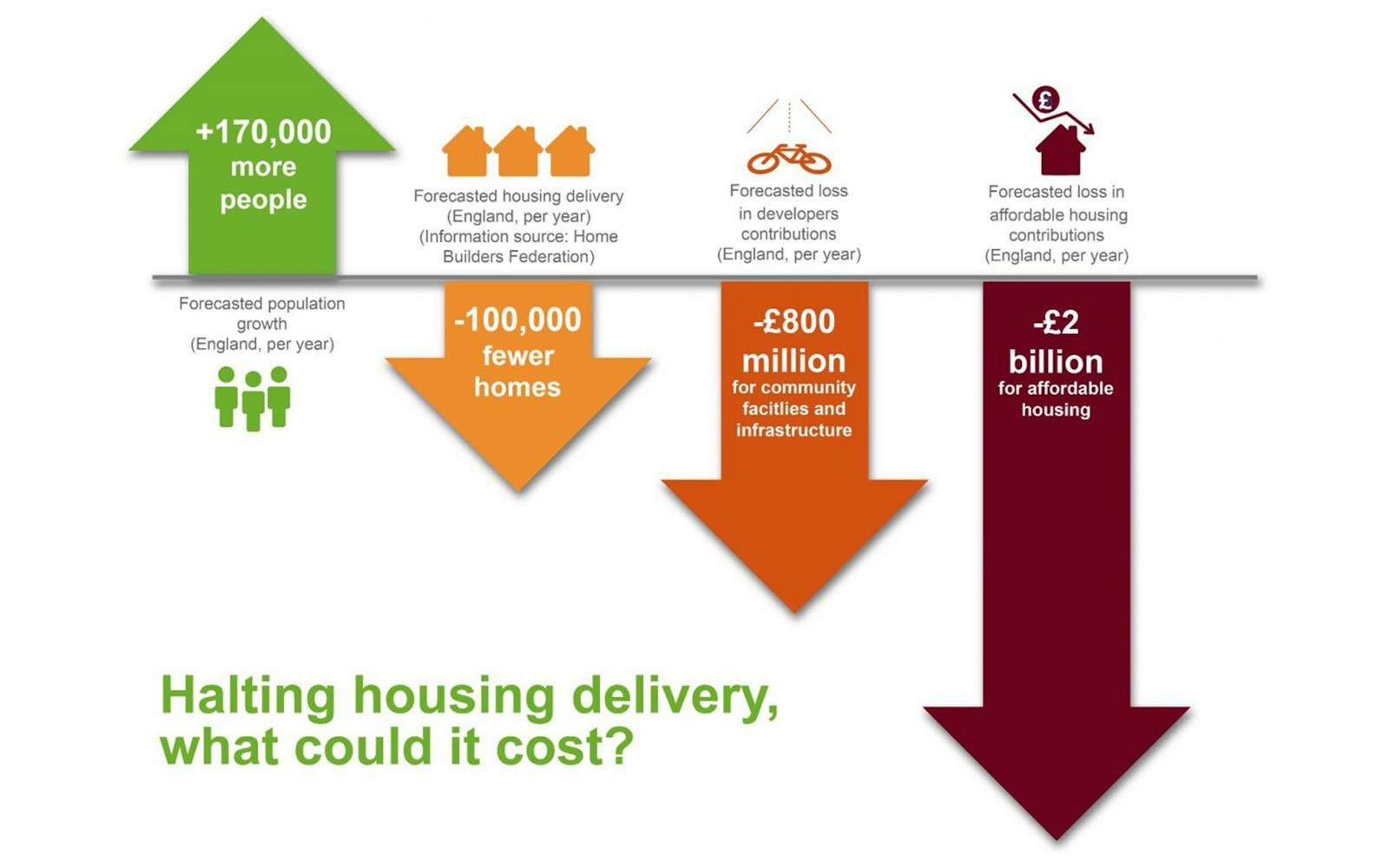
NPPF and LURB: It’s not just housing, it’s everything in between
As anyone who’s been following the debates around the National Planning Policy Framework (NPPF) and Levelling Up and Regeneration Bill (LURB) proposals know, there’s been a plethora of blogs, articles and social media posts warning about the likely decline in housebuilding across England. We at LUC agree that this is a logical conclusion. The changes will undoubtedly lead to a reduction in housing targets in numerous local plans. We’re already seeing the effects of the potential changes with local authorities rolling back or pausing their plans.
Perhaps less discussed is how a decline in housebuilding will affect the rest of the economy, society and our environment. This note considers the new policy’s key economic, social and environmental impacts, including how it will affect the delivery of vital social infrastructure and affordable housing in England.

Downing tools on housing means less infrastructure to support a growing population and fewer affordable homes
Infrastructure and affordable housing is funded, at least partly, by capturing the land value uplift that occurs as a result of development – through developer contributions. As such, if housing delivery declines, less infrastructure and affordable housing will be provided. These losses should however be considered against a projected ten-year population increase of 1.7 million in England. This will only further exacerbate existing shortfalls.
Predictions of what might happen to housing delivery as a result of the proposed policy changes vary. Taking the forecast of The Home Builders Federation, of 100,000 fewer homes a year, we have reviewed what the loss of expected developer contributions could be, based on the average developer contribution per dwelling in England.
Our review (see graphic above) indicates that Local Planning Authorities (LPAs) across England could stand to lose as much as £800 million in infrastructure contributions and almost £2 billion in affordable housing contributions if housing delivery dropped by 100,000 homes per year. This means at least £60m less for open space and environment, £120m less for transport and travel, £25m less for community assets and £180m less for education and £400m which CIL would otherwise collect.
Over a 10-year period, the total could reach around £8 billion of lost infrastructure spend – thereby compounding existing issues in a country already concerned with a creaking and overworked infrastructure system. It will also result in a loss of around £20 billion in affordable housing contributions.
A shortage of housing is therefore not the only concern, there will also be a significant loss in available funding and delivery of vital social and environmental infrastructure and affordable housing.
The wider knock-on effects of reduced housing and infrastructure delivery
We have undertaken an appraisal of the likely economic, social and environmental impacts of the biggest announcements in the NPPF consultation. The key NPPF changes we have considered in this review are:
- Changes in the requirements for local authorities to deliver on housing numbers, the removal of Duty to Cooperate, the responsibility to meet unmet needs from neighbouring authorities and the amended test of soundness
- Green Belt receives greater protection
- Changes to onshore wind policy
See our appraisal of the NPPF’s biggest changes (PDF)
Our high-level ‘Red-Amber-Green’ assessment suggests that the government’s proposed changes could have some substantial negative economic, social and environmental impacts across society.
We look forward to seeing more detailed proposals. LUC is ready to support future work to refine the proposals that minimise the negatives and maximise the positives for society and the environment.
Get in touch with Stuart Langer if you’d like to discuss.









